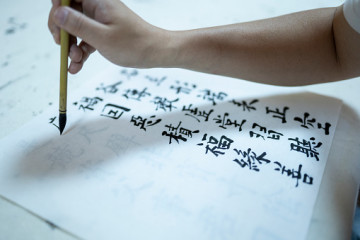

"It will be impossible to head towards modernity and modernisation in either China or the Arab world, without the help of the translation movement": These are the words of Zhang HongYi, Dean of the College of Arabic language at the School of International Studies at Peking University, during a workshop on Arabic-Chinese translation focusing on standard practice in the field as well as tools to combat common difficulties.
The workshop was one in a series of activities arranged by Jordanian academic Ibtisam al-Samedi, for the seventh session of the "Sheikh Hamad Award for Translation and International Understanding". This annual event takes place in Doha, and submissions will be accepted until the middle of August. This year, Chinese has been chosen as the main second language besides English.
Translation: A science and an art
Zhang HongYi considers translation to be a science, comprising a process by which verbal and written discourse can be transferred from the source language to a target language. This discourse contains information, ideas, and meanings as well as carrying within it the intended message of the writer.
To reach the goal, which is an accurate transmission of the source text, translation requires both explanation and interpretation. This is not a new concept – it has ancient roots in both Chinese and Arab thought, in fact throughout the world
She suggests that literary translation on the other hand is also an art – a form of art as old as the written word which requires creativity, linguistic sensitivity and the ability to bridge the gap between two cultures.
"To reach the goal, which is an accurate transmission (achieving 'value equivalence) of the source text, translation requires both explanation and interpretation. This is not a new concept – it has ancient roots in both Chinese and Arab thought, in fact throughout the world." This theory has been appreciated in the fields of history, literature, and human sciences among translators since the 13th century.
Zhang HongYi points to the example of translations of Arabic poems by Imru' al-Qais and Zuhayr bin Abi Sulma by Chung Jikon who is based in Beijing. He focused on delivering the meaning and poetic vision of the originals, rather than sticking too closely to details like place names which would not mean anything to Chinese readers.
She also mentions the translations from Chinese to Arabic of the philosophical works of the Taoist monk Lau Yan, which contained thorough explanations of Taoist beliefs and wisdom and made them accessible to an Arab audience.
Mastery of the language essential
However, she also says that mistakes are common in translations between the two languages and calls on Arab and Chinese translators to work hard to master their mother tongue and their target language to the level necessary. She emphasises the importance translators constantly work on broadening and renewing their knowledge, gathering new terms and phrases from books, daily life, social trends and global affairs in order to develop an encyclopaedic cultural knowledge store.
They must also take seriously the responsibilities they hold as translators towards the author and their book as well as the readership.
It is important, she concludes, to be objective and not to project personal opinions or impressions. She advises that translators undertake a preliminary translation before reviewing it in order to correct mistakes in wording and structure, before conducting a final review to refine and polish the text.
Zhang HongYi is the author of the university textbooks, What's new in the Arabic Language, Arabic Literary Texts in the Modern and Contemporary Eras and Selections from Literary Texts. She has also published studies in Arabic and Chinese, such as Modern Arabic poetry in the shadow of Globalisation, and Psychological Literature in China and the Arab World. She has translated works by the following Arabic poets into Chinese: Ahmed Shawqi, Gibran Khalil Gibran, Badr Shakir al Sayyab, Farouk Gweda and Nizar Qabbani.
This is an edited translation from our Arabic edition. To read the original click here.
Translated by Rose Chacko




 Follow the Middle East's top stories in English at The New Arab on Google News
Follow the Middle East's top stories in English at The New Arab on Google News


